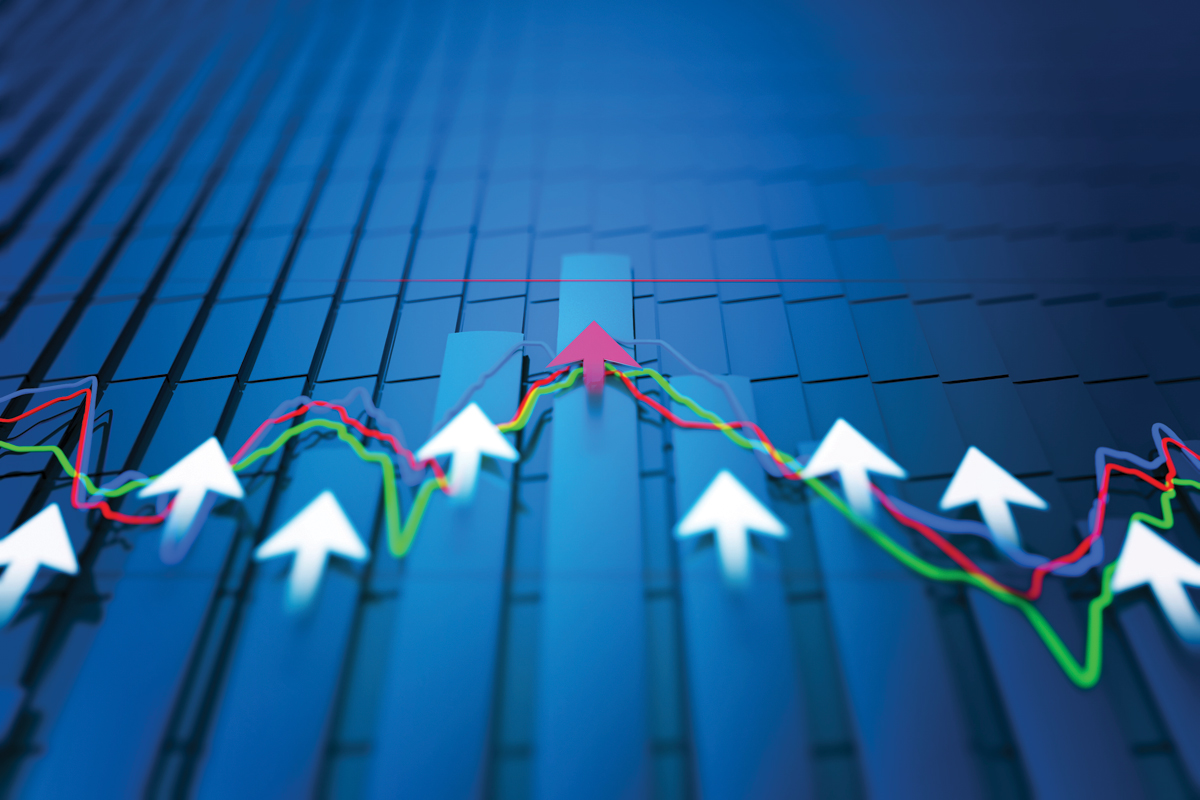Equity and Fixed Income Market
October, a historically volatile month for the markets, turned out to be strong. In this article, we will examine recent activity, and then dive into key drivers of the equity market, and evaluate the fixed income market, writes Ketu Desai.
October was a risk on month. Equities had an impressive rally, led by tech companies. Behind strong economic data, cyclical industries such as financials, industrials, materials, all had strong months. Equities were strong all around the world, Emerging markets and Europe continued their impressive year. While equities rallied, risk off assets such as Treasuries and gold fell.
A favorable global economy, earnings, and the potential for tax reform/cuts are the key drivers behind the rally. Themes that have been in place for most of the year. In October, the IMF raised its forecast for growth to 3.6% this year and 3.7% next year, an acceleration from the 3.2% growth recorded in 2016. At the same time, the IMF lowered its inflation forecast to 1.7%, thus providing support to a so-called goldilocks economy. Domestically, conditions have also been favorable, GDP posting another 3% quarter, historical signs of recession appear to be limited.
Earnings continue to come in strong, companies are reporting earnings that are 4.7% above the estimates, with an earnings growth rate for the third quarter of 4.7%. Sales are 1.5% above estimates, with a growth rate of 5.7%. Over the past few years companies have been focused on margin improvement and cost cutting, and now with better economic growth, revenue has been able to grow, providing strong earnings. We have seen particularly strong results from companies that provide insight into the economic picture, such as Caterpillar, 3M, General Motors, Morgan Stanley, Johnson & Johnson, Honeywell, Boeing, Visa, Union Pacific, American Airlines, UPS, Microsoft, Intel, Amazon, U.S. Steel, and Alphabet. Insurance companies and biotech have had a particularly tough earnings season.
Finally, positive steps were made in recent weeks toward tax reform/cuts. For 2018, earnings are expected to grow 7%, to $140/share. If we assume that the effective corporate rate goes down 4 percentage points to 23 percent — that would add $8 to earnings, bumping up 2018 estimates to $148 from $140, or 13% growth from 2017.
While equities rallied, we saw rates move out. During the month, the ECB announced that it will extend its quantitative easing program until September 2018. Starting in January, it will scale back buying bonds to 30 billion euros a month, from the current 60 billion euros. They pledged to keep borrowing rates at current levels, and well past the bond-buying program. Many of these rates are negative. While it is likely, for the near-term, policy from both from Europe and Japan will keep a ceiling on U.S. long-rates; at current levels, Treasuries, municipal bonds, investment grade bonds, and high yield bonds, investors must evaluate the merit of these investments over the course of the cycle. If interest rates move up 1%, the 10-year Treasury will roughly be down 8.7% in price. It is important to keep in mind, many of these instruments are yielding levels that are near all-time or cyclical lows.
There is a saying among investors not to fight the Fed, and a traditional fixed income portfolio, might be doing just the opposite. Many prominent investors are calling an end to an approximately 30-year bond-bull market. If rates increase quickly, it will likely impact asset classes beyond bonds, as they get re-valued. As the Fed shifts policy, and we see better economic numbers, inflation and rates are worth keeping a close eye on. In recent earnings calls / reports, we have heard some comments such as the following, suggesting that there might finally be some inflation pressure.
Kimberly-Clark Corp: “Our commodity inflation estimate has increased somewhat from three months ago.” “It is a stronger inflation than we were expecting.”
Procter & Gamble: “We knew we’d see higher pulp price cost going into [the] year, these costs have continued to increase beyond initial forecast ranges. Ethylene, propylene, kerosene, and the polyethylene and polypropylene resins have increased recently.”
Honeywell, Inc. commented on the company’s Oct. 20 call: “Overall we’ve probably been more challenged on the cost side this year than we’ve seen in a while.”
Texas Roadhouse: Management raised its forecast for labor inflation to a range of 7% to 8%, up from previous guidance of mid-single digit growth.
Robert Half International, Inc. chairman and CEO Harold Messmer: “Clearly we’re seeing clients starting more projects. They’re spending more money. They have more sense of urgency. Their existing staff [has been] lean because they’ve held a line so far during this recovery. So, there’s some pent up demand that results from that.”
Manpower Group, Inc. CEO Jonas Prising: “The labor market in the U.S. is extremely tight, [it is] hard to find people.”
Markets will continue to focus on earnings, economic numbers, and the on-goings in Washington. The end of year has historically been strong, let’s see if the trend continues!
Interested readers can reach Ketu Desai by email ketu@isquaredwealth.com.


